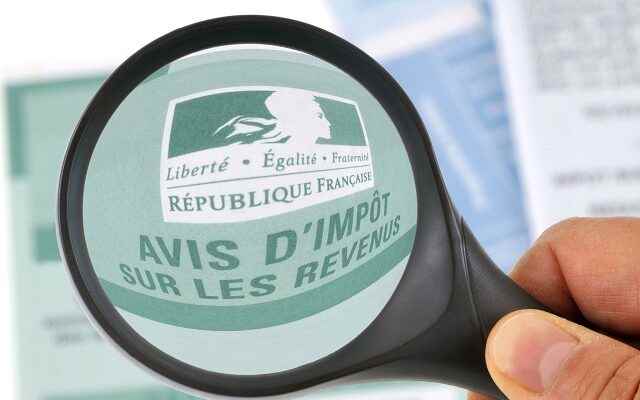The presentation at the end of September of the finance bill (PLF) for 2023 confirmed the government’s desire to continue to index the income tax scale to inflation, despite the very high price levels currently suffered by taxpayers. This is good news since it generally amounts to reducing the tax of all those who do not experience increases in wages or pensions at the height of inflation. This also helps to prevent certain (non-taxable) households from falling into tax or that others move into a higher bracket.
At least +5.4% this year
The government has adopted INSEE’s forecast for the evolution of the consumer price index excluding tobacco in 2022, i.e. +5.4%. This revaluation therefore results in an increase in income determining the gradual entry into the different tax brackets (11%, 30%, 41% and 45%) in order to neutralize, in theory, the effects of inflation on the household tax level.
It must be clearly understood that the revaluation of the tax scale is not made to directly compensate for consumer price inflation but to neutralize the indirect effect of the increase in wages or pensions, necessarily stronger when inflation is significant. Households whose income is increasing less rapidly than inflation, and there should be many of them this year, are therefore winners from the point of view of the scale of tax payable.
Debates for next week
While the examination of the PLF will begin next Monday before the deputies, an even more favorable amendment has already been voted in the Finance Committee and will be debated next week. It would be a question of setting up a differentiated indexation of the income tax scale in order to grant a targeted tax boost to the most modest households and the middle classes, while inflation generally has a more direct impact on these households. This amendment proposes indexation at a rate one point higher than inflation, i.e. +6.4%, while imposing an additional effort on the wealthiest with indexation limited to 4.4% for the last tranche at 45% .
The new 2023 slices
To sum up, the government proposes for the moment to lower the entry into the tax which would be made this year from 10,777 € (10,225 € last year) in the first tax bracket to 11% while the second tranche at 30% would start at €27,478 compared to €26,070 in 2021 and the third tranche at 41% at €78,570 compared to €74,545. As for the last tranche at 45%, it would start at €168,994 against €160,336 last year. These brackets concern 2022 income which is deducted at source this year but whose final tax calculation will only take place in 2023 after the spring tax return.
| The above tax rates are applicable for 1 share of family quotient | ||
| REVENUES 2021 | Revenues 2022 | Rate |
|---|---|---|
| Up to €10,225 | Up to €10,777 | 0% |
| From €10,225 to €26,070 | From €10,777 to €27,478 | 11% |
| From €26,070 to €74,545 | From €27,478 to €78,570 | 30% |
| From €74,545 to €160,336 | From €78,570 to €168,994 | 41% |
| Over €160,336 | Over €168,994 | 45% |
If the proposal for differentiated indexation were accepted, the entry into tax would be further reduced this year: from €10,879 in the first bracket at 11%, to €27,738 in the second at 30% and to €79,316 in the third at 41%. On the other hand, the 45% tranche would be from €167,391. A slice which concerns, as we can see, very high incomes little affected by inflation…
| The above tax rates are applicable for 1 share of family quotient | ||
| REVENUES 2021 | Revenues 2022 | Rate |
|---|---|---|
| Up to €10,225 | Up to €10,879 | 0% |
| From €10,225 to €26,070 | From €10,879 to €27,738 | 11% |
| From €26,070 to €74,545 | From €27,738 to €79,316 | 30% |
| From €74,545 to €160,336 | From €79,316 to €167,391 | 41% |
| Over €160,336 | Over €167,391 | 45% |
to know
The ceiling for the tax benefit of the family quotient should also be increased to at least €1,678 per half-share (€1,592 in 2021). For low-income households, the amounts used to calculate the discount will be revalued in the same way.
